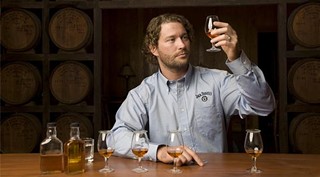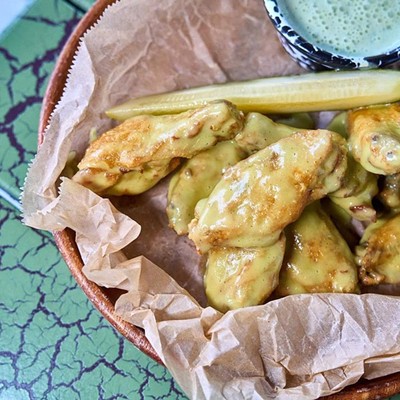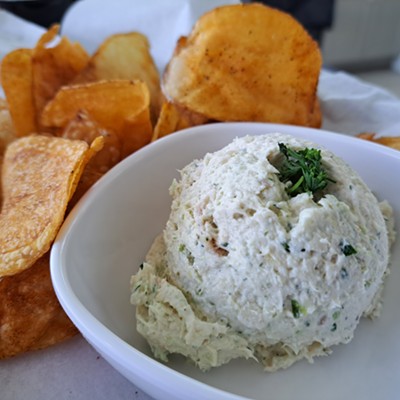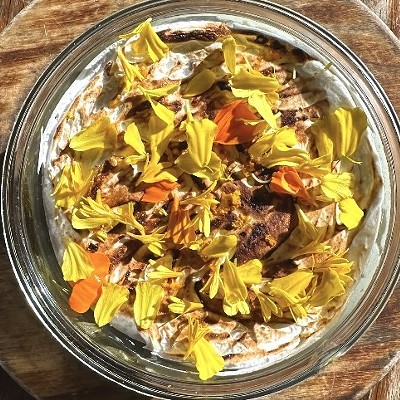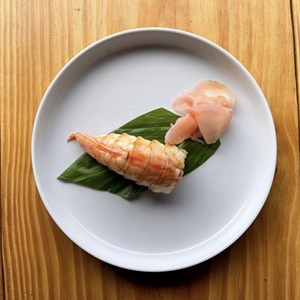Of all the things to get paid to do on a daily basis, whiskey taster would have to be way up on the list.
Jeff Norman is one such holder of that dream job — specifically, he’s Master Taster for Jack Daniel’s Tennessee Whiskey.
How do you get that plum gig?
“You’ll have to stand in line,” Norman jokes. “My dad was a taster when he worked there.”
“There” being the distillery in Lynchburg, Tennessee, about an hour and half south of Nashville, where all Jack Daniel’s is made.
College helps too, Norman says. Dude’s a doctor — a PhD in chemistry from Tennessee Tech, to be exact.
That said, he’s no nerd. Looking like he stepped right out of a country music video, Norman cut a dashing figure in our office last week, in his black Western shirt, jeans, and black boots.
However, a lush he’s not. He doesn’t actually drink Jack Daniel’s on the job.
“I taste it and then spit it out,” he assures us.
Norman joined the Connect Savannah editorial staff for a tasting to demonstrate some new products. Being the diligent journalists we are, we’d be a disgrace to our profession if we didn’t take advantage of the opportunity to experience firsthand this great American institution.
Our sacrifice is your enlightenment, and here are the results of our arduous research.
Jack Daniel’s isn’t bourbon, but it does start the same as bourbon — with a mix of 80 percent corn (to be a bourbon at least 51 percent corn is required), 12 percent barley malt, and 8 percent rye. That mix is ground up and mixed with spring water from the groundwater source which Jack Daniel’s owns. Yeast makes it all ferment.
In the distilling process, “our copper stills are running in some combination 24/7,” Norman says. “Keep in mind when you’re drinking Jack Daniel’s that the whole world’s supply comes from Lynchburg.”
At this early point in its life, Jack Daniel’s is a clear, strong alcoholic drink: “white lightning, basically moonshine for all practical purposes,” says Norman.
We taste a sample of this primeval Jack. It’s grainy, with oily overtones from those grains. Not bad, but not something you’d go out and buy.
Then we taste samples of bourbon that’s gone through the extra step that defines a Tennessee whiskey: Charcoal mellowing.
“We make our own charcoal from sugar maple wood, then we grind it up and pack it into mellowing vats, ten feet deep and six feet across,” Arnett says, explaining that it’s much like a charcoal filter you might put on your kitchen sink at home, removing impurities and crisping the taste.
“This is what makes Jack Daniel’s whiskey Jack Daniel’s whiskey,” he says.
We taste samples that have passed through ten feet of sugar maple charcoal. It’s still clear, but it’s cleaner, with much less aroma.
“This is our blank slate,” says Norman.
From there, Jack Daniel’s goes into the barrel, where it gets its familiar color, flavor and aroma.
“The recipe to make whiskey is important, but the barrels are just as important,” he explains.
Jack Daniel’s uses barrels from a cooperage in Kentucky made of American white oak. There’s even a recipe for the barrels, too.
“The barrels are toasted on the inside before the whiskey goes in,” Norman says. “That caramelizes the sugars that are naturally found in the white oak. That caramel note, that vanilla note, that butterscotch note — all of them come from sugars in the barrels.”
After toasting, the barrels are actually charred on the inside. Then, the clear whiskey goes in and the barrels are stacked in non–air–conditioned warehouses to mature so that “we can get some help from Mother Nature,” says Norman.
As the seasons progress in these warehouses without climate control, so does the taste of Jack Daniel’s in the barrel.
“The summertime heat in the warehouse causes the whiskey to expand and force its way into the wood,” he says. “When it gets cold, the whiskey will actually contract and pull flavor, color and aroma back out of the barrel.”
It’s a dynamic process that takes several years, depending on the brand. It’s also a process that is influenced by where in the five or seven–floor warehouses the barrels are stacked.
We taste samples of a new Jack Daniel’s product, Gentleman Jack, a particularly smooth 80–proof whiskey, its palate cleansed by a second step of charcoal mellowing before going in the barrel. It has much less of the woody taste usually associated with bourbons and Tennessee whiskeys.
Of course we taste samples of the legendary “Old Number 7” black label Jack Daniel’s, the brand known and loved for generations, which is clearly more vibrant than the Gentleman Jack.
Then we taste the new Jack Daniel’s Single Barrel, a robust yet drinkable 94–proof whiskey which gets its darkness and full flavor from mellowing longer in the barrel — over six years as opposed to the usual four and a half or five.
“The Single Barrel is the most mature of our whiskeys,” says Norman. “We keep it up in the top of the warehouse, which is kind of like your attic — it gets really hot in the summer. ”
Interestingly, Single Barrel — as its name indicates — is bottled by the barrel, i.e., each bottle contains whiskey drawn from only one barrel. In practice this means that each bottle of Single Barrel can conceivably taste different than other barrels of the same product.
In a nice marketing twist capitalizing on this unpredictability, Jack Daniel’s offers individual barrels for sale to companies or events. On top of each bottle of Single Barrel you’ll see distinctive numbers which indicate exactly which barrel that bottle came from.
Last but not least, we tasted the product that Arnett really came here to show off: the new Tennessee Honey brand.
(It’s technically a 70 proof liqueur — but we won’t tell anyone.)
Flavored with honey contracted from regional beekeepers and delicious when served chilled, Tennessee Honey isn’t sickly sweet — a guy can drink it and not feel lame.
“We didn’t want it to be syrupy, and we definitely don’t want it to hide the whiskey,” says Norman.
Oh, it doesn’t. But just to be sure, we had to have several more tastes. Just another day in the life of a dedicated journalist.

